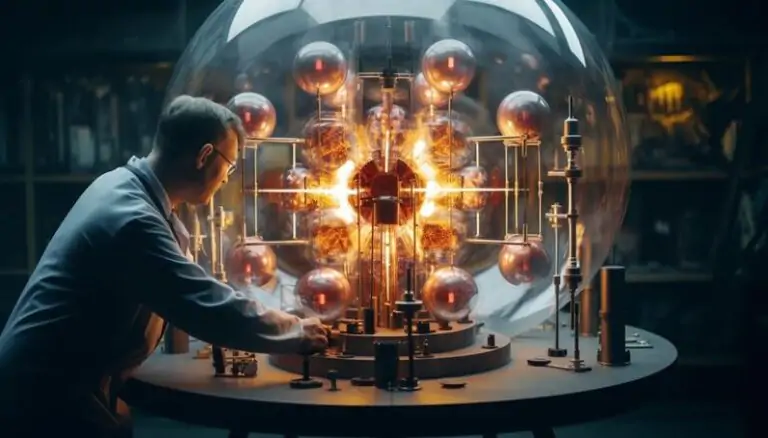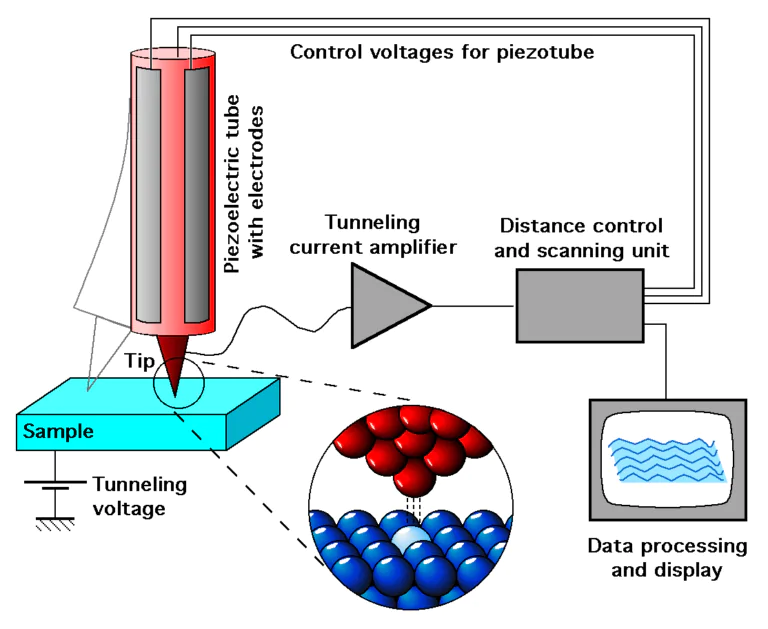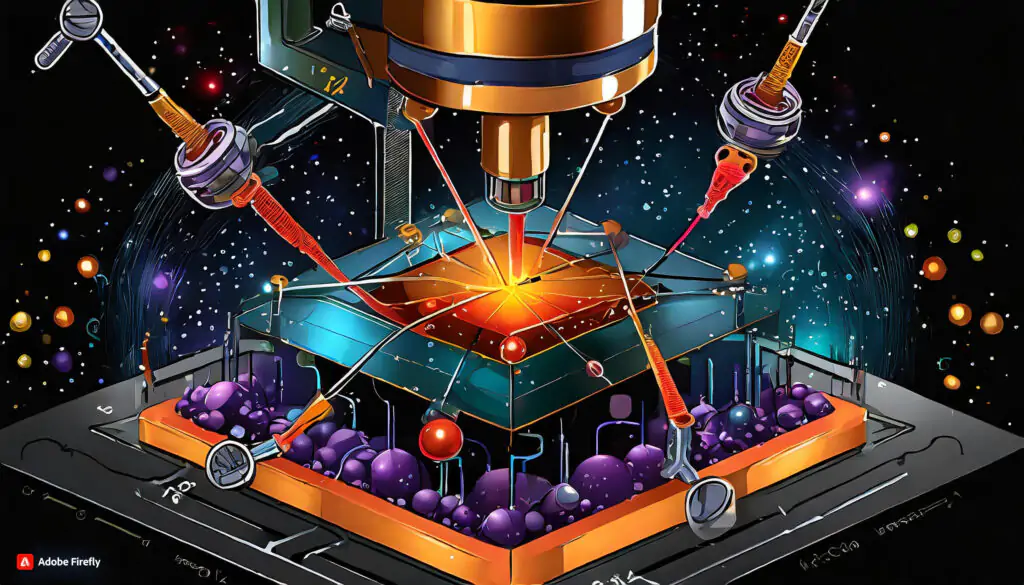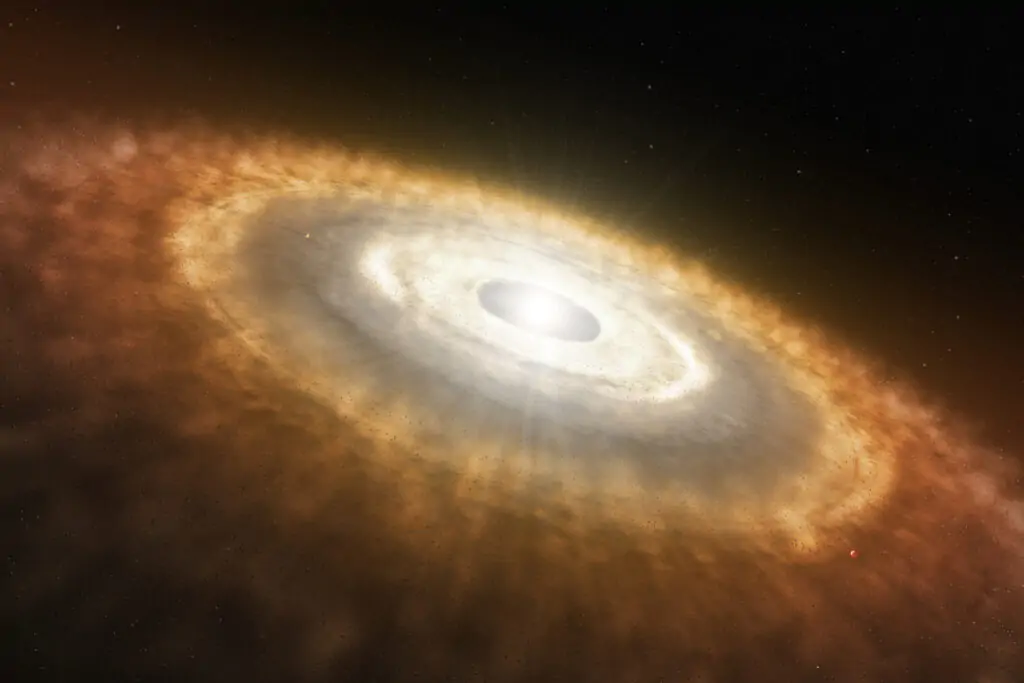Introduction
Scientists have long recognised two types of magnetic order in materials: ferromagnetism and antiferromagnetism. In 2019, a group of researchers at Johannes Gutenberg University Mainz (JGU) proposed a third type of magnetism, altermagnetism. This altermagnetism has long been the topic of fierce discussion among specialists, with some doubting its existence. A group of researchers led by Professor Hans-Joachim Elmers at JGU was recently able to measure for the first time at DESY (Deutsches Elektronen-Synchrotron) an impact that is considered a mark of altermagnetism, providing evidence for the existence of this third type of magnetism. The research findings were reported in Science Advances.
A team of experimental researchers led by Professor Hans-Joachim Elmers at JGU was recently able to measure for the first time at DESY (Deutsches Elektronen-Synchrotron) an effect that is considered a signature of altermagnetism, providing evidence for the existence of this third type of magnetism.
Altermagnetism – a new magnetic phase
Antiferromagnets have alternating magnetic moments, whereas ferromagnets, as we know from refrigerator magnets, have all of their magnetic moments aligned in the same direction. Thus, at the macroscopic level, the magnetic moments of antiferromagnets cancel each other out, resulting in no external magnetic field – causing refrigerator magnets constructed of this material to simply fall off the fridge door. Altermagnets’ magnetic moments differ in terms of orientation.
Altermagnets combine the advantages of both ferromagnets and antiferromagnets. Professor Hans-Joachim Elmers, head of the magnetism group at JGU’s Institute of Physics, explained that their neighbouring magnetic moments are always antiparallel to each other, as in antiferromagnets, so there is no macroscopic magnetic effect, but they do exhibit a spin-polarized current, just like ferromagnetism.

Rotating in the exact same direction with consistent spin
Typically, magnetic fields are generated by electric current. However, when viewing an altermagnet as a whole, incorporating the spin polarization in the electronic bands in all directions, it is clear that the magnetic field must be zero, notwithstanding the spin-polarized current. If, on the other hand, attention is limited to electrons that travel in a specific direction, it follows that they must have uniform spin.
These symmetry phenomena have nothing to do with layouts or electron locations, but rather with the direction of electron velocity,” Elmers explained. In this context, physicists use the phrase “momentum space“ since velocity (v) multiplied by mass (M) equals’ momentum. JGU’s theoretical groups, directed by Professor Jairo Sinova and Dr. Libor Šmejkal, had previously anticipated this impact.
Proof achieved by momentum electron microscopy
The research group was the first to experimentally verify the effect,” Elmers stated. The scientists applied a specially designed momentum microscope.
For this study, the researchers exposed a tiny coating of ruthenium dioxide to X-rays. The ensuing electron excitation was enough to cause them to emit from the ruthenium dioxide layer and be detected. The velocity distribution allowed the researchers to calculate the velocity of the electrons in ruthenium dioxide.
The researchers altered the focus plane that is typically utilised for observation in regular electron microscopes to create their momentum microscope. Rather than a magnified image of the surface of the ruthenium oxide film, their detector displayed a depiction of momentum space. “Differing momentums show in distinct locations on the detector. To put it simply, the numerous directions in which electrons flow in a layer are represented by matching dots on the detector,” explained Elmers.
Altermagnetism might potentially be significant to spintronics. In dynamic random access memory, electrons’ magnetic moments would be used instead of their charges. As this happens, storage capacity may be greatly expanded. “Our findings could be an answer to what is an important problem in the field of spintronics,” he said. “Maximising the possibility of altermagnets would make it easier to read stored data based on the spin polarisation in the electronic bands.

Conclusion:
Scientists at Johannes Gutenberg University Mainz, experimentally proved, that Altermagnetism, is an innovative magnetic phase that shows an important advancement in the field of magnetism. This third form of magnetism combines the functions of ferromagnetism and antiferromagnets, which provide different features that have the power to change spintronics and other applications. Altermagnets, which can produce spin-polarized electricity while retaining a zero macroscopic magnetic field, have the potential to advance technologies such as flexible random access memory (RAM), allowing for bigger storage capacity and more efficient data reading techniques.
FAQ's
Q: Define altermagnetism? How is it different from conventional ferromagnetism and antiferromagnetism?
A: A recent study suggest that Altermagnetism is a magnetic phase that combines ferromagnetism with antiferromagnetism. In contrast to ferromagnets, where all magnetic fields are arranged in the same direction, and antiferromagnets, where they interchanging. The altermagnets contain connecting magnetic moments that are constantly antiparallel to one other, causing no macroscopic magnetic effect.
Q: Explain how the presence of altermagnetism was confirmed.
A: A group of scientists worked under the supervision of Professor Hans-Joachim Elmers at Johannes Gutenberg University Mainz. They carry out experiments to assure the presence of altermagnetism. They carry out research at DESY (Deutsches Elektronen-Synchrotron) a specifically designed momentum microscope to investigate electron momentum in a ruthenium dioxide layer, providing proof for altermagnets’ special features.
Q: What are the possible uses of altermagnetism in spintronics?
A: Altermagnetism has important applications in spintronics, especially in dynamic random access memory (DRAM) technology. Altermagnets is use in the magnetic moments of electrons because it’s not use their charges, that’s why it provide greater storage capacity and more efficient data readout techniques, thereby control major complications in the field of spintronics.
Q: How can altermagnets help in dynamic random access memory (DRAM) technology?
A: Altermagnets have the property to increase DRAM technology by storing it using electron magnetic moments. Due to this, storage capacity increased and enhanced data reading methods, providing a potential answer to major problems in the creation of next-generation memory systems.










I am not sure where youre getting your info but good topic I needs to spend some time learning much more or understanding more Thanks for magnificent info I was looking for this information for my mission
This webpage is unbelievable. The wonderful substance exhibits the administrator’s enthusiasm. I’m stunned and expect more such mind blowing entries.
Somebody essentially lend a hand to make significantly posts I might state That is the very first time I frequented your web page and up to now I surprised with the research you made to create this particular put up amazing Excellent job
I don’t think the title of your article matches the content lol. Just kidding, mainly because I had some doubts after reading the article.
Your article helped me a lot, is there any more related content? Thanks!
Your writing style is so engaging and easy to follow I find myself reading through each post without even realizing I’ve reached the end
Can you be more specific about the content of your article? After reading it, I still have some doubts. Hope you can help me.
Thanks for sharing. I read many of your blog posts, cool, your blog is very good.
Your article helped me a lot, is there any more related content? Thanks!